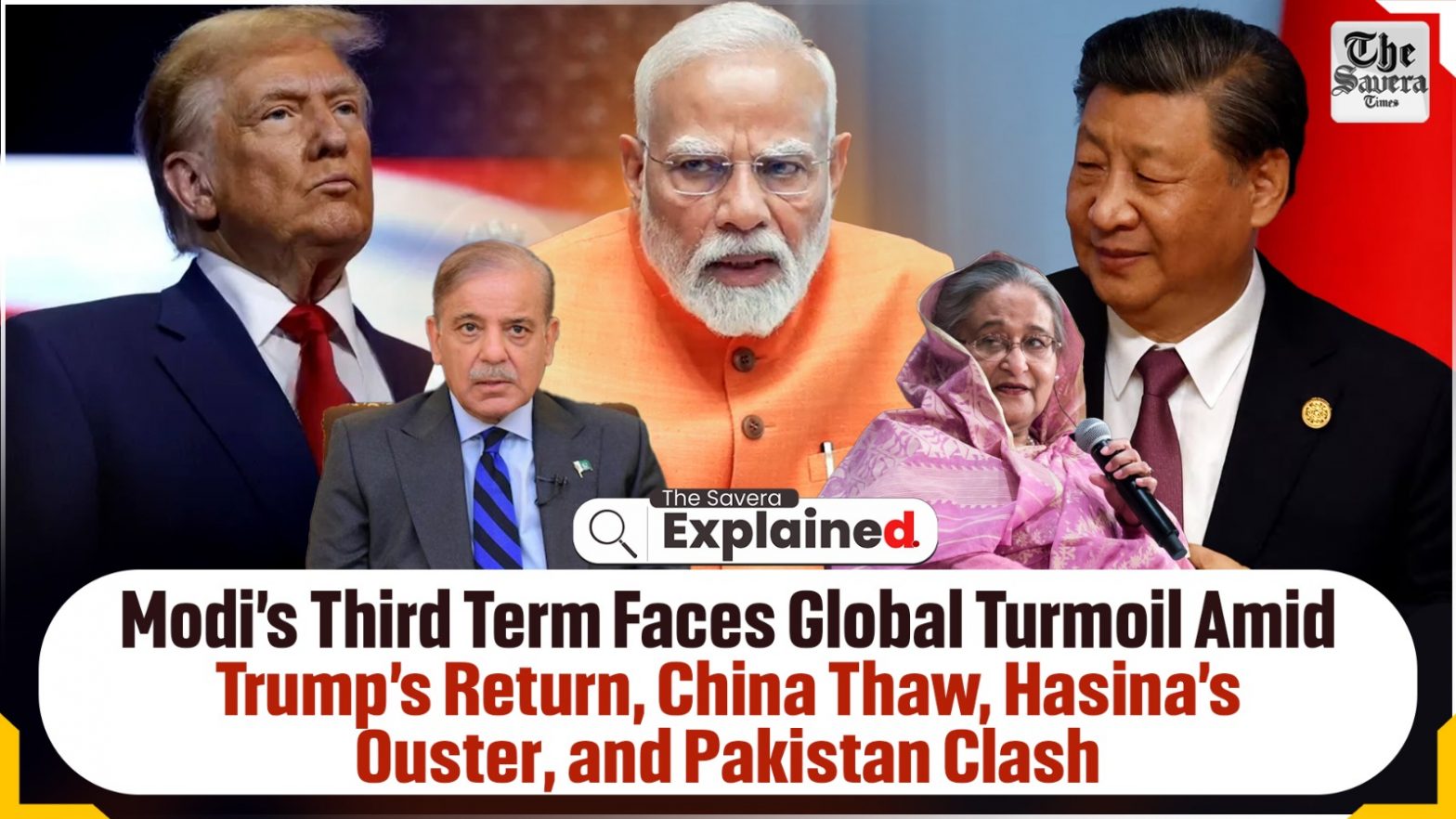
Narendra Modi’s third term as the Indian Prime Minister has faced several complexities shaped by the US President Donald Trump’s second presidency on January 20, 2025.
India’s border standoff with China had been ongoing for four years, Sheikh Hasina had been at the helm of Bangladesh for 16 years, and in Pakistan, the army had propped up a new coalition government. Significantly, there had been no major attack by Pakistan-sponsored terrorists since February 2019.
A year on, almost everything has changed. Trump has made a phenomenal political comeback, Indian and Chinese troops have disengaged in Ladakh, Hasina has been ousted from power, and India has had a four-day military confrontation with Pakistan after a massive terror attack targeted civilian tourists in Pahalgam.
US: Trump, the Disruptor
Since he took charge as President in January, Donald Trump’s actions have plunged the world into uncertainty. His tariffs on countries around the world have caused massive disruptions in trade and markets, and India has been pushed into negotiating a trade deal with the US.
To signal intent to his domestic base, Trump has made a spectacle of the deportation of illegal immigrants-planeloads of Indians, too, have been returned in shackles.
He has gone after top universities and foreign students in the US, putting several Indian students under scrutiny and causing widespread concern. With a number exceeding 3.3 lakh, Indians make up one of the largest foreign student cohorts in the US. New Delhi’s diplomatic challenge in Washington has become more complicated in Trump’s world.
About Trump’s 2nd Presidency as US President
Donald Trump’s second presidency began on January 20, 2025, after defeating Kamala Harris in the 2024 election. His administration swiftly enacted policies focused on immigration, trade, and government efficiency. Trump signed the Laken Riley Act, reinstated the national emergency at the U.S.-Mexico border, and initiated mass deportations. His administration also withdrew from the World Health Organization and the Paris Climate Accords, while imposing high tariffs that led to a stock market crash.
Trump established the Department of Government Efficiency (DOGE), led by Elon Musk until May 2025, to cut federal spending. His foreign policy included trade wars, tariff hikes, and controversial stances on Ukraine and Gaza. However, his presidency has been marked by legal challenges, executive orders, and political tensions. Trump remains the oldest U.S. president and the first convicted felon to hold office.
Legal challenges and political tensions after Trump’s Presidency
Some Global Disruptions after Trump’s Presidency
CHINA: Thaw in Ladakh
After four-and-a-half years of confrontation, India and China agreed to disengage troops at two remaining friction points in Depsang and Demchok in eastern Ladakh in October, and to resume patrolling.
Prime Minister Modi and President Xi Jinping met and decided to move towards normalising ties – steps are being taken to organise the Kailash Mansarovar Yatra for Indian pilgrims; talks are underway to restart direct flights, remove curbs on visas for the Chinese, share trans-border river data, and resume exchange of journalists.
But more than 50,000 troops remain deployed on the icy heights, awaiting the next steps of de-escalation and de-induction.
BANGLADESH: Hasina’s fall
After 16 years in power, the Awami League regime in Bangladesh collapsed like a house of cards in the face of street protests from students and activists backed by the political opposition in July-August last year.
Prime Minister Sheikh Hasina fled, and has been living in India since August 5.
Following the chaotic transition to an interim government led by Nobel laureate Prof Muhammad Yunus, New Delhi’s ties with Dhaka have suffered. Islamists and a spectrum of opportunists have gone after those aligned with Hasina’s regime. Minorities, including Hindus, who bene-fited from Hasina’s secularist politics, have been attacked, provoking a very strong response from New Delhi. Bangladesh has asked for Hasina to be extradited but India has taken the call of giving her refuge. Yunus has played the China card, and New Delhi has tightened screws on visas and trade.
PAKISTAN: Blood and Sindoor
India responded to the killing of 26 civilians in Pahalgam first with diplomatic steps, -f including putting the Indus Waters Treaty in abeyance, and then with the military step d of launching attacks on nine terrorist locations, including headquarters of the Lashkar-e-Taiba and Jaish-e-Mohammed.
Following four days of military confrontation, a ceasefire was announced. India subsequently spelt out the new nor-mal in its dealings with Pakistan, vowing a response whenever a terror attack takes place again.
THE UPSHOT: Testing times
In a world made chaotic by Trump’s turbulent presidency, India continues to face challenges posed by Pakistan, and China, which continues to stand firmly with its “all-weather friend” and ally.
Moving ahead, President Trump, President Xi, and General Asim Munir will test New Delhi’s diplomatic skills and capacity.
